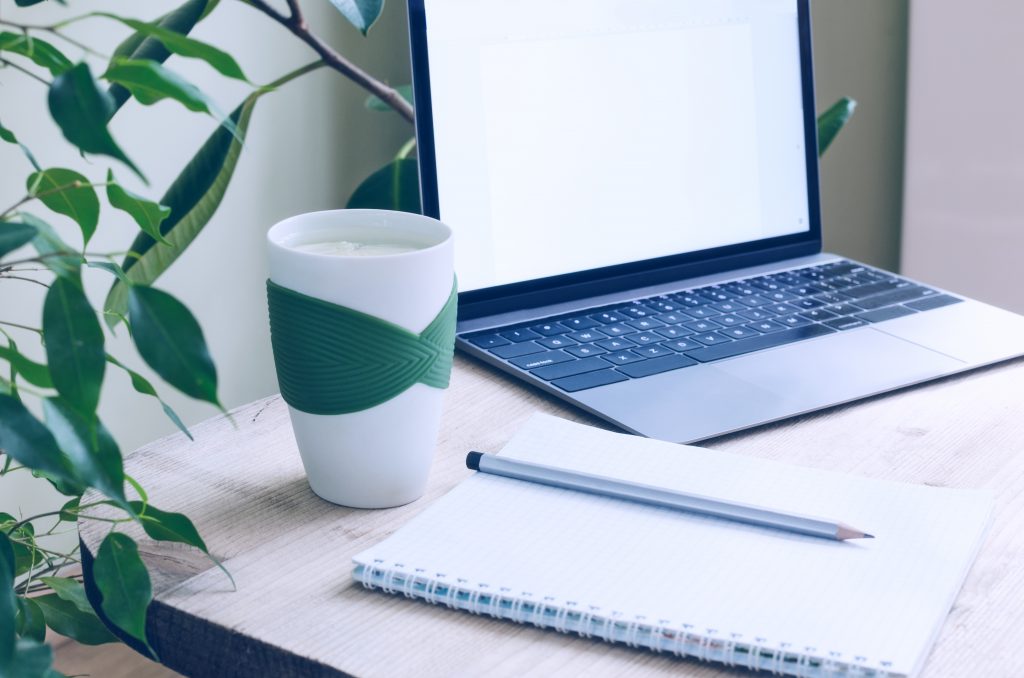Do you want to green your office but don’t know where to start? We’ve compiled a list of useful greening tips that are both environmentally and budget-friendly.
Here are 10 ways to make your office greener:
Redesign your workspace
It is said that people who work in spaces close to natural light are notably more productive than those who don’t, and are said to sleep better at night too. Adding plants to your office not only creates a happier, greener environment to work in, but also uplifts the room and reduces stress levels and increases productivity. Plants also help clean the air by absorbing carbon dioxide and releasing oxygen.
Natural air ventilation
Having a well ventilated office is imperative for optimal productivity. Ensure that your office space is within close proximity to windows and doors, keeping them open to allow fresh air to flow through the space. This will in turn reduce the need to make use of cooling systems such as and fans or air-conditioning, resulting in a more eco-friendly and economical ventilation choice.
Heating and cooling
While the seasons change throughout the year, our habitual tendencies to turn to heaters and air-conditioning systems aren’t doing much to save the environment. In the summer months, wear cooler clothes made from lighter materials such as organic cotton that is more permeable and comfortable to wear on sweltering hot days. Making use of blinds and external shading helps keep you cool during hot days. Try stay away from heat sources such as windows with sun coming through, and make use of ample ventilation to promote good airflow. In the winter months, take a blanket with you to leave at work for colder days that you can wrap around you, and layer it up with jerseys and coats to beat the cold.
Refuse, reduce, reuse, & recycle
Recycling at work is a good start to reducing waste consumption. It should be noted that not all plastics are recyclable currently in that specific composition or in one’s location, which may come as a surprise to some people. This emphasises the importance of trying to reduce your waste consumption by refusing single-use packaging items. If such items are unavoidable, then look for recyclable packaging.
Another useful way to reuse waste is by implementing, for example, an eco-bricking station. Eco-bricking is a very effective way to reuse waste that’s non-recyclable. It’s a simple process whereby you stuff an empty 2 liter bottle with general waste (that won’t decompose) up to the brim until its compact, and donate it to any organisation in your area that collects eco-bricks for building purposes. For more information on eco-bricking, visit this website.
Food waste collection is another aspect to consider when setting up waste collection bins in the office. By investing in either a worm farm or Bokashi bin, you can put compostable waste to good use. A worm farm is simple to maintain, and it produces juices that you can take home to feed your vegetable garden, or give to the plants in the office. A bokashi bin works similarly whereby you collect all food waste in the bin, and it produces a similar juice as well as compost that can be used for growing vegetables.
For more information on reducing waste consumption, you can read our waste blog here.
Reducing water consumption
Water is one of the scarcest resources globally. Residents in the Western Cape are feeling the effects thereof amidst one of the worst droughts in recorded history that the province has ever faced. Even if you reside in an area that is not affected by drought, it is still your duty to save this precious resource.
Collecting grey water when washing dishes with eco-friendly dish-washing liquid can prove to be beneficial for watering office plants and flushing toilets. If a grey water system has not yet been installed in your work space, we suggest collecting grey water using a bucket in/under your sink. This tactic can cut back a considerable amount of consumption, and end up saving you money as well. You could also detach the basin pipe and collect water in a bucket below the basin to use for flushing. To further reduce the amount of water needed for flushing, you can add a brick to the cistern of the toilet to displace the water.
Installing low-flow water fittings is another useful way to cut down on water use. This can reduce your water flow from about 12 liters per minute to as low as 1,3 liters per minutes depending on the type of aerated low-flow fitting you install. That’s a lot of water!
Want more ways to save water? Read our blog post on getting serious about water conservation here.
Lunch time
When cooking dinner, keep lunch for the next day in mind. It will save you the hassle of going out during your lunch break to buy food, and also cut down on the excessive single-use plastic packaging that most food items come in these days. Save your wallet and save the environment by bringing pre-cooked meals to work in reusable containers. If you prefer to snack throughout the day, buy snacks like fruit and nuts in bulk for the week that you can pack in reusable containers at home each day.
Engage employees
Having all employees on board with strategies on how to be a more eco-friendly office is imperative to the success of getting it right. Through constantly communicating with employees on tips to be more green, you are sure to have an office where everyone makes a conscious effort on lessening their carbon footprint. Hosting regular meetings can prove to be beneficial, and having an ideas box present in the office where employees can make suggestions is useful in generating new ideas.
Consider placing signage in your office as relevant reminders to be green. For example, reminding employees to only flush the toilet when necessary, or turning off laptops and plug points when not in use, or only boiling the required amount of water to save electricity.
Work from home
If your job allows you to work from any place with an internet connection, why not consider working from home, or an eco-friendly coffee shop/restaurant within walking distance from home? Even if it is a few days a week, it will greatly reduce the need for you to use your car, which equates to less carbon emissions. This could also save you from having to buy lunch that comes in unwanted packaging by making your own at home.
Carpooling & cycling
Carpooling to work is one of the most simple yet effective ways to reduce your carbon footprint. Why not find colleagues that live close to you or on the way to work and carpool with them? You’ll be saving yourself money and fuel, and making friendships at the same time.
Another sustainable way to travel to work is by bicycle. If you live within a reasonable distance to work, cycling is a great way to stay fit and make a conscious effort to reducing your carbon footprint!
Go digital & save paper
Our first (and only) rule to printing is: don’t do it! With today’s technology, it is so quick and simple to send digital copies of files or documents. You can even set up your own digital signature to save from printing. But, we know that sometimes it is unavoidable, so we recommend you print 2 pages per sheet, double sided, in draft setting and on recycled paper. When choosing a typeface, go for ‘eco vera sans’, as it is perforated to use less ink when printing. Some printers even have an eco-friendly printing option which is beneficial.
There are many ways in which to become an eco-friendly, green office. It’s the small efforts that add up and contribute to a greater cause. Driving positive change, one green office at a time!”


